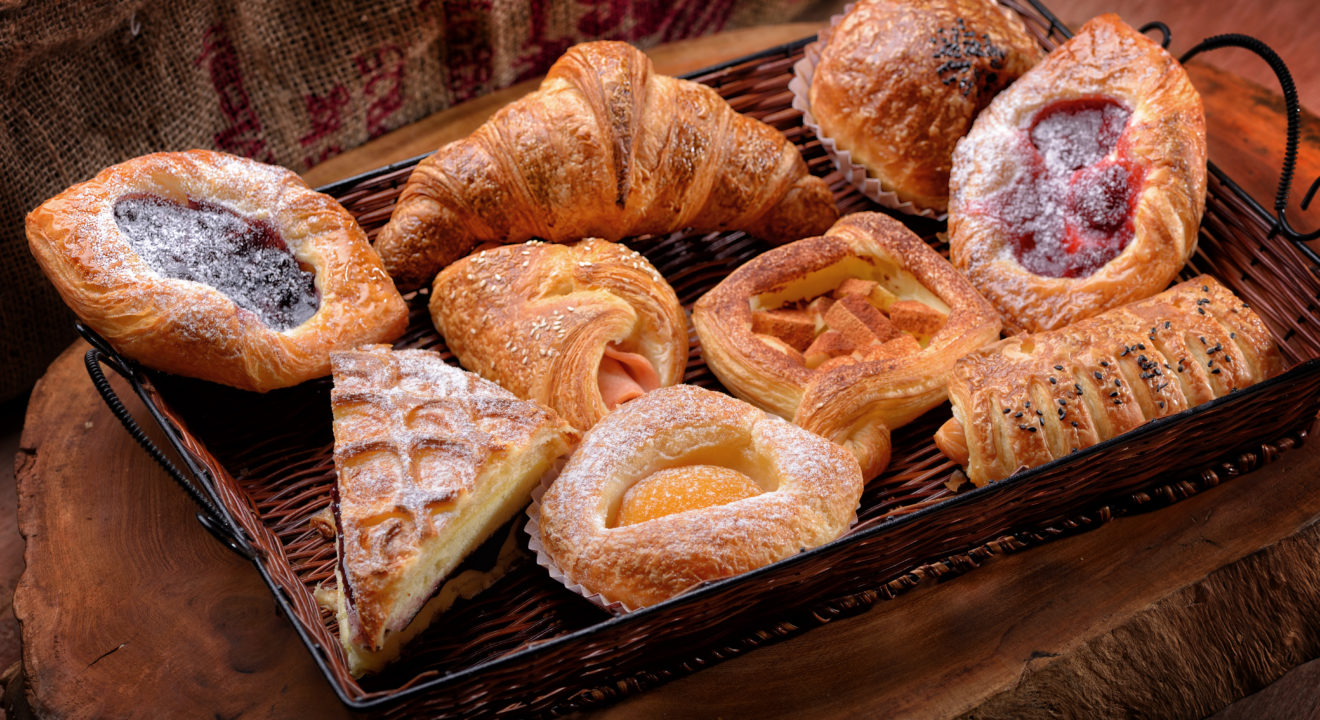August 28, 2017
Fun fact: the invention of croissants were inspired by Austrian pastries.


Although you don’t really need an excuse to eat a pastry, a lot of people only save sweet treats for special occasions. And that’s the beauty of national food days.
If you’re looking for a cheat day, National Pastry Day may be the best one. It comes around every year on Dec. 9. No one really knows how this special holiday came about, but, we’re not going to question this blessing. ood
But wait – what makes a pastry, well, a pastry?
Don’t worry, we’ve got you covered. Here are five facts you need to know about pastries so you can appreciate national pastry day even more.
The Pastry War was between France and Mexico. The History website reports that during Mexico’s 1821 independence from Spain, the rioting and fighting government forces and rebels led to damaged property. One property involved was French pastry chef Remontel’s bakery near Mexico City. Remontel’s bakery was completely ransacked. The Mexican government, however, refused to compensate Remontel for the damage Mexican police had caused. So, Remontel decided to go to France and French King Louis-Philippe.
At the time, Mexico had unpaid debts to France from the Texas Revolution of 1836, so France was sympathetic to Remontel’s problems. Thus, France demanded 600,000 for Mexico’s unpaid debt and 60,000 for Remontel’s store, although his store was valued at less than 1,000 pesos. When Mexico declined the threat, the French navy began blocking key seaports along the Gulf of Mexico.
From spring of 1838 to Nov. 27, 1838, the two countries were at a stalemate.
But in November, French warships bombarded Mexico and Mexico declared war on France. French marines raided San Juan de Ulúa and captured most of the Mexican navy.
After recruiting disgraced military general Antonio Lopez de Santa Anna, Mexico drove French forces back to their ships.
The Pastry War ended less than four months later.
Eventually, British diplomats created a peace agreement between the two countries and Mexico agreed to pay France 60,000 pesos.
They all used a filo-type pastry, which is a mixture of flour and oil. They created honey cakes, fruit pastries, sweet tarts and dumplings stuffed with dates and nuts.
The Romans created a pastry dough they used to cover meats and keep them moist while cooking, but they were never actually eaten. These pastry doughs were thrown away once the meat was cooked.
And when the Medieval period came, it introduced pastry recipes that resemble the pastries we’re familiar with today.
Nuns baked pastries from ancient recipes and sold them to the public to support themselves, according to Good Food Stories. Nuns of Naples were famous for their sweets. In the 17th century, each convent even had their own specialty. But, their baking was seasonal and mostly for holidays.
These nuns ultimately invented the Italian pastries, sfogliatelle and struffoli.
According to the Smithsonian, the story began when Austrian entrepreneur August Zang opened the first Viennese bakery in Paris in 1838. Parisians were rushing to Zang’s store to try his Vienna bread, kaiser rolls and kipfel after seeing his newspaper advertising and exquisite window displays.
But, after Zang sold his bakery and moved back to Austria, Parisians started opening up bakeries imitating his Austrian pastries. Somewhere along the way, a kipfel, a crescent shaped pastry, was made with puff pastry and the croissant was born.
The baked goods corporation, Sara Lee, then introduced croissants to America with frozen croissant packages.
Now, people all over the world enjoy the flaky pastry.
What differentiates bread from pastries is the fat content. Pastries have a higher fat content, which is what gives them their crumbly texture.
The five basic types of pastries are shortcrust pastry, filo pastry, choux pastry, flaky pastry and puff pastry.
This may seem confusing, so here are some examples you may recognize.
Due to their airy texture, croissants are puff pastries. Pies, however, have a regular pastry dough crust. Éclairs, on the other hand, are made with choux pastry, and strudels and cream puffs are made with a filo pastry. Other pastries you can also eat include cannolis, pretzels and tarts. Hungry, yet?
If you are, grab yourself a pastry on National Pastry Day!
But as great as National Pastry Day is, there are other days to celebrate our favorite sweets, including National Dessert Day, National Cookie Day and National Chocolate Day. These are all perfect excuses to eat massive amounts of sweet treats all day.